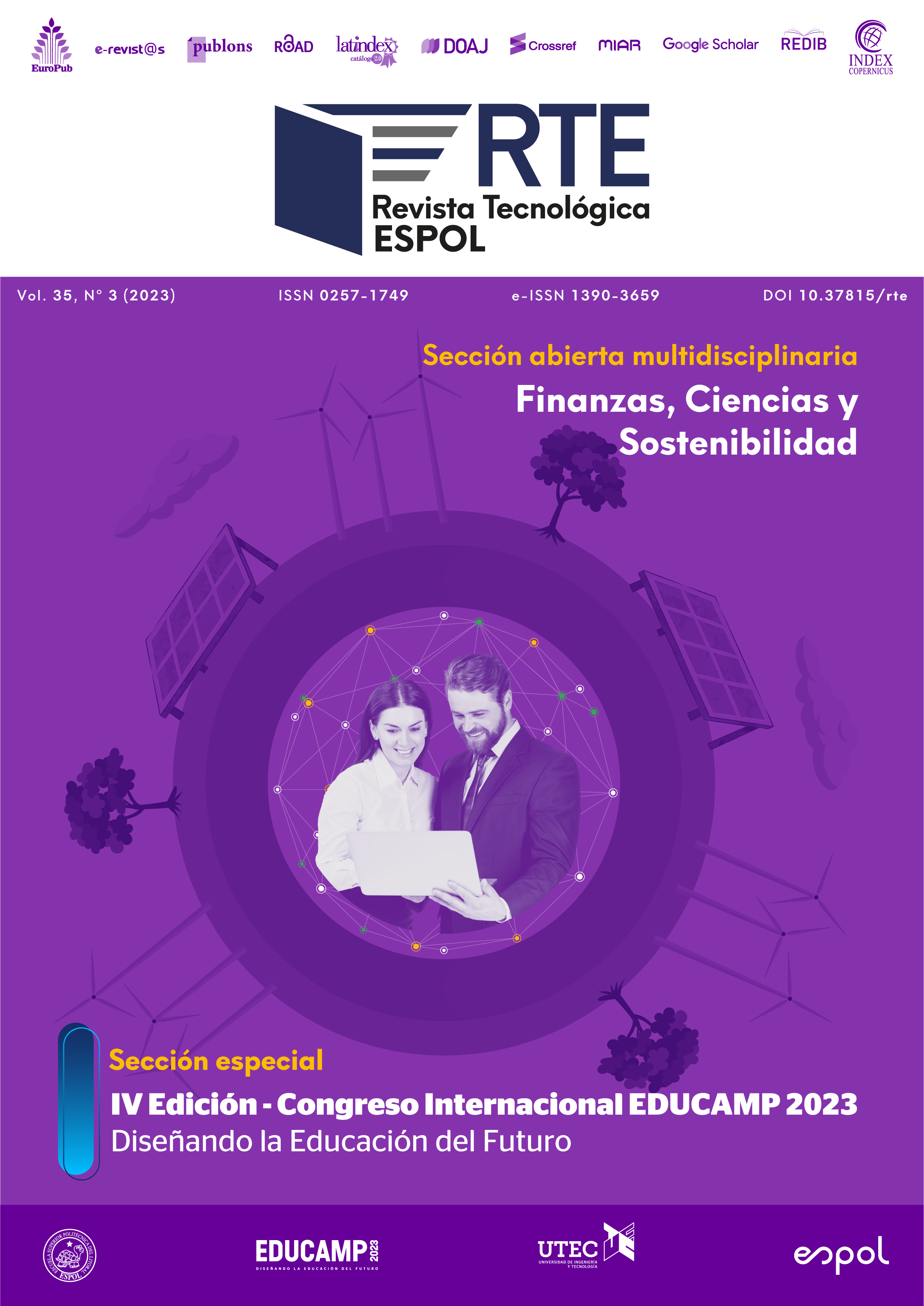Durante los últimos años se ha dado un giro paradigmático en el rol de la ciencia y la tecnología en la sociedad que propone la necesidad de enfrentar los grandes desafíos de las problemáticas socio-ambientales de desarrollo. Por naturaleza estas son complejas, interseccionales y requieren de marcos interdisciplinarios para entenderlas y enfrentarlas. En este artículo se cuestiona cómo la universidad puede convertirse en un elemento clave para la implementación de una educación superior de calidad que proporcione a los estudiantes las competencias requeridas para abordar estos problemas complejos. Este estudio se basa en el caso de la Universidad de Ingeniería y Tecnología - UTEC del Perú, y se propone que las disciplinas HACS (Humanidades, Artes y Ciencias Sociales) tienen el potencial para brindar a los estudiantes las metodologías y herramientas para entender los problemas de desarrollo como problemas complejos y, sobre todo, subjetivos; y, también contribuyen a operativizar la interdisciplinariedad con las disciplinas STEM (Science, Technology, Engineering, and Mathematics). Mediante el desarrollo de cursos y actividades académicas desarrollados por el Departamento de HACS y la Coordinación Académica, los estudiantes de UTEC aprendieron a identificar una problemática global o general, tomando en cuenta la multidimensionalidad, los espacios de debate y actores asociados al mismo. Así pueden aterrizarla a un contexto local, rutinario y concreto, generando soluciones humanas.

Esta obra está bajo una licencia internacional Creative Commons Atribución-NoComercial 4.0.
Referencias
Aguilera, D., Lupiañez, J.L., Vilchez-Gonzalez, J.M. & Perales-Palacios, F.J. (2021). In Search of a Long-Awaited Consensus on Disciplinary Integration in STEM Education. Mathematics, 9, 587-597. https://doi.org/10.3390/math9060597
Aguilera, D., & Ortiz-Revilla, J. (2021). STEM vs. STEAM education and student creativity: A systematic literature review. Education Sciences, 11(7), 331. https://doi.org/10.3390/educsci11070331
Allen, G. I. (2021). Experiential learning in data science: Developing an interdisciplinary, client-sponsored capstone program. In Proceedings of the 52nd ACM Technical Symposium on Computer Science Education, pp. 516-522.
Boon, W., & Edler, J. (2018). Demand, challenges, and innovation. Making sense of new trends in innovation policy. Science and Public Policy, 45(4), 435-447. https://doi.org/10.1093/scipol/scy014
Bybee, R. W. (2010). What is STEM education?. Science, 329(5995), 996-996.
Bybee, R. W. (2013) The Case for STEM Education: Challenges and Opportunities. National Science Teachers Association NSTA Press.
Caeiro M. (2021). Diálogos entre la Tecnología, el Arte, la Ciencia y las Humanidades en contextos educativos: de los modelos STEAM y SHAPE al TACH-di. Educación artística: revista de investigación (EARI), 12, 43-60. https://www.redalyc.org/articulo.oa?id=671971853003
Chaminade, C., & Lundvall, B. Å. (2019). Science, Technology, and Innovation Policy: Old Patterns and New Challenges. Oxford Research Encyclopedia of Business and Management. https://doi.org/10.1093/acrefore/9780190224851.013.179
Collins, C. S. (2018). Not Just a Technical Problem: The Intersections of STEM and Social Science in Addressing Global Poverty en New Directions of STEM Research and Learning in the World Ranking Movement (pp. 97-110). Palgrave Macmillan, Cham. https://doi.org/10.1007/978-3-319-98666-1_7
Conradty, C., & Bogner, F. X. (2018). From STEM to STEAM: How to monitor creativity. Creativity Research Journal, 30(3), 233-240. https://doi.org/10.1080/10400419.2018.1488195
Cummings, C & J. Yur-Austin (2022) Design thinking and community impact: A case study of project-based learning in an MBA capstone course, Journal of Education for Business, 97:2, 126-132. https://doi.org/10.1080/08832323.2021.1887795
Dierking, L. D., & Falk, J. H. (2016). 2020 Vision: Envisioning a new generation of STEM learning research. Cult Stud of Sci Educ, 11, 1–10. https://doi.org/10.1007/s11422-015-9713-5
Dredd, D., Kellam, N., & Jayasuriya, S. (2021) Zen and the art of STEAM: Student knowledge and experiences in interdisciplinary and traditional engineering capstone experiences. In 2021 IEEE Frontiers in Education Conference (FIE) (pp. 1-9). IEEE.
Dutson, A. J., Todd, R. H., Magleby, S. P., & Sorensen, C. D. (1997). A review of literature on teaching engineering design through project‐oriented capstone courses. Journal of engineering education, 86(1), 17-28.
FUTURUM (1 de julio de 2023) STEM, STEAM and now SHAPE: Can an acronym help valorize the social sciences, humanities and arts? https://futurumcareers.com/stem-steam-and-now-shape-can-an-acronym-help-valorise-the-social-sciences-humanities-and-arts
Gleason, D. W. (2020). The humanities meet STEM: Five approaches for humanists. Arts and Humanities in Higher Education, 19(2), 186-206. https://doi.org/10.1177%2F1474022218806730
Hsiao, P. W., & Su, C. H. (2021). A study on the impact of STEAM education for sustainable development courses and its effects on student motivation and learning. Sustainability, 13(7), 3772. https://doi.org/10.3390/su13073772
Jones, M. M., Abrams, D., & Lahiri, A. (2020). Shape the Future: how the social sciences, humanities and the arts can SHAPE a positive, post-pandemic future for peoples, economies and environments. Journal of the British Academy, 8, 167-266. https://doi.org/10.5871/jba/008.167
Kattel, R., Mazzucato, M. (2018). Mission-oriented innovation policy and dynamic capabilities in the public sector. Industrial and Corporate Change, 27 (5), pp. 787-801. https://doi.org/10.1093/icc/dty032
Lewis, A. L. (2015). Putting the “H” in STEAM: Paradigms for modern liberal arts education. Emerging technologies for STEAM education: Full STEAM ahead, 259-275. https://doi.org/10.1007/978-3-319-02573-5_14
Loray, R. (2017). Políticas públicas en ciencia, tecnología e innovación: tendencias regionales y espacios de convergencia. Revista de Estudios Sociales, 62, 68-80. https://doi.org/10.7440/res62.2017.07
Marcone, G. (2021). ¿Cómo nos aseguramos que la educación en carreras STEM esté formando los profesionales que necesitan las políticas de CTI orientadas a los desafíos globales? Reflexiones sobre el rol de las humanidades y ciencias sociales en la formación de perspectivas i. Sociología y tecnociencia, 11(Extra_1), 23-36.
Marcone, G. (2022). Humanities and Social Sciences in Relation to Sustainable Development Goals and STEM Education. Sustainability, 14(6), 3279.Mejía, A. (2009). Tres esferas de acción del pensamiento crítico en ingeniería. Revista Iberoamericana de Educación, 49(3), 5-6. https://doi.org/10.35362/rie4932091
Minlikeeva, A. N., Amato, K. A., & Przybyla, S. M. (2022). Modern public pealth problems and solutions: an undergraduate capstone course to prepare the next generation of public health practitioners to enhance health equity. Frontiers in Public Health, 10, 992835.
Mohr-Schroeder, M. J., Cavalcanti, M., & Blyman, K. (2015). STEM education: Understanding the changing landscape. En A practice-based model of STEM teaching (pp. 3-14). Brill.
Otsuki, G. J. (2018). Finding the Humanities in STEM: Anthropological Reflections from Working at the Intersection. New Directions of STEM Research and Learning in the World Ranking Movement: A Comparative Perspective, 65-78. https://doi.org/10.1007/978-3-319-98666-1_5
Roy. M and A. Roy, (2021). "The Rise of Interdisciplinarity in Engineering Education in the Era of Industry 4.0: Implications for Management Practice," in IEEE Engineering Management Review, vol. 49, no. 3, pp. 56-70, 1 thirdquarter,Sept. 2021. https://doi.org/10.1109/EMR.2021.3095426
Sanders, M. (2009). STEM, STEM education, STEMmania. the technology teacher. Virginia Tech Blacksburg.
The British Academy. (1 de julio de 2023). This is SHAPE. https://www.thebritishacademy.ac.uk/this-is-shape/
United Nations Educational, Scientific and Cultural Organization (UNESCO). 2019. Framework for the Implementation of Education for Sustainable Development (ESD) Beyond 2019. UNESCO: France.
United Nations Educational, Scientific and Cultural Organization (UNESCO). (1 de julio de 2023). Necesaria la educación STEAM+H para cultivar un pensamiento y habilidades transformadoras, innovadoras y creativas para avanzar hacia un desarrollo sostenible. https://www.unesco.org/es/articles/necesaria-la-educacion-steamh-para-cultivar-un-pensamiento-y-habilidades-transformadoras-innovadoras
Universidad de Ingeniería y Tecnología (UTEC). (1 de julio de 2023). UTEC 2021-2025. https://utec.edu.pe/planeamiento
Van den Beemt, A., MacLeod, M., Van der Veen, J., Van de Ven, A., Van Baalen, S., Klaassen, R., & Boon, M. (2020). Interdisciplinary engineering education: A review of vision, teaching, and support. Journal of engineering education, 109(3), 508-555.
Vasen, F. (2016). ¿Estamos ante un “giro postcompetitivo” en la política de ciencia, tecnología e innovación? Sociologias, 18(41), 242-268. https://doi.org/10.1590/15174522-018004112
Zeidler, D. L. (2016). STEM education: A deficit framework for the twenty first century? A sociocultural socioscientific response. Cultural Studies of Science Education, 11, 11-26.







